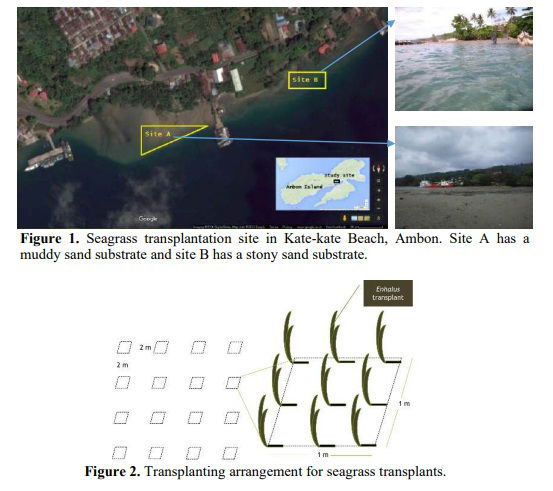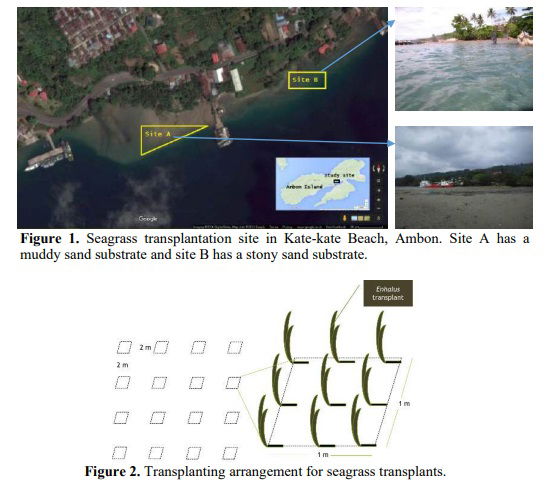Transplantation of Enhalus acoroides on a sedimentary beach in Ambon Bay

ABSTRAK:
Coastal development in Ambon Bay has been contributing to coastal ecosystem degradations in recent years. One of the negative effects was the over sedimentation that changes the landscape of coastal ecosystem such as seagrass beds. These changes have made this ecosystem lost some of its functions especially as the habitat for other biotas, because the vegetation has been buried and reduced in density. So, in December 2015, a rehabilitation effort has been done at Kate-kate Beach with transplantation techniques of Enhalus acoroides. After 3-11 months of observation, it was noticed that only the transplants in the deeper area survived; on the contrary, the transplants in exposed and dry area during low tide did not survive. Overall, the survival rate of the transplantation project was 49.73% because the transplants need enough submerged condition to support their lives. The study recommends that to rehabilitate damaged seagrass beds due to the over sedimentation, we have to remove the sediment until certain depth during low tide to ensure the transplants are submerged in seawater. On top of that, the local government has to reduce the sedimentation rate from land because over sedimentation will make the beach profile become too shallow and too exposed during the low tide.
1. Introduction
Seagrasses are flowering plants whose whole life processes in the shallow seawaters [1]. They often grow in vast meadows and provide nurseries, shelter and food for a variety of commercially, recreationally and ecologically important species such as fish, sea turtles, dugongs, manatees, sea horses, crustaceans, gastropods, bivalves, sea cucumbers and many others [2,3,4,5,6]. These meadows are a highly productive and dynamic ecosystem; it ranks among the most productive in the ocean [7] and it is also more productive than cultivated corn or rice field [8]. However, this important ecosystem is globally declining due to human activities in coastal areas such as dredging, reclamation and pollutions [9]. One of the locations that undergoes seagrass degradation is Ambon Bay, Ambon. Over the past years, there have been many landscape changes in Ambon Bay due to coastal development such as land clearing to build houses and other buildings and also beach reclamation to extend available land. The positive effect from this development is that human lives have become more advanced because more facilities to support modern lifestyle have been built. On the other side, the coastal development has also led to the degradation on ecosystem such as seagrass beds. The seagrasses vegetation has been buried and their density has been reduced. This has led to the loss of several important ecosystem functions such as habitat, carbon uptake, and productivity, which in the end can impact the human lives near this area. So, to reduce this negative effect, a rehabilitation effort on coastal ecosystem such as seagrass beds needs to be done as soon as possible.

